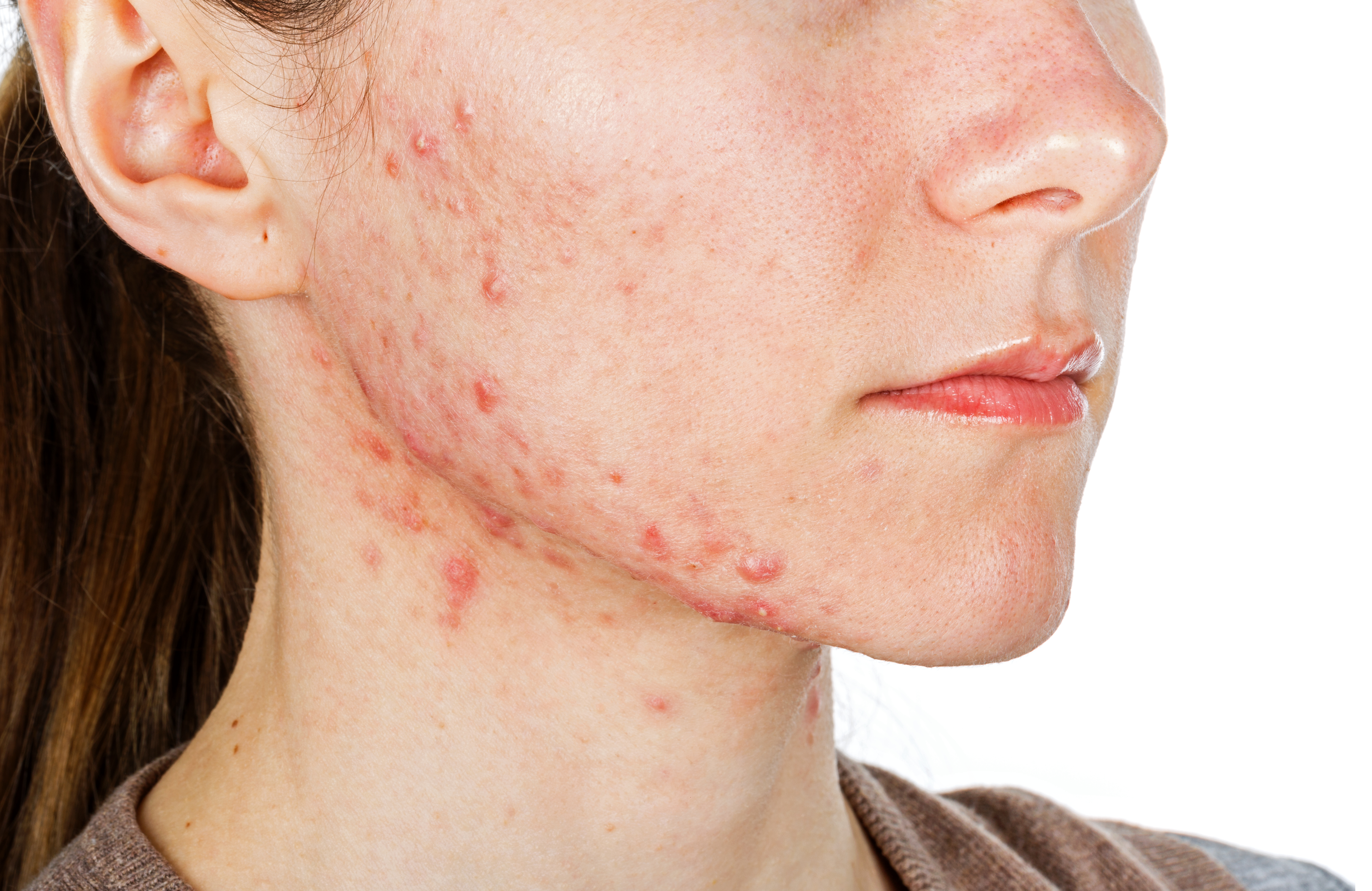 Acne is a chronic skin condition characterised by the development of spots.
Acne is a chronic skin condition characterised by the development of spots.
- The size, shape, colour and whether contains pus; are used to classify the spots
- Acne commonly develops on the1:
1. Face – affecting almost everyone
2. Back – affecting >50%
3. Chest – affecting about 15%
Cause
- Sebaceous glands at the base of the hair follicle glands produce too much sebum forming a plug in the follicle.
- If skin on plug breaks, bacteria on the skin contaminates and infects the follicles, causing spots to develop.
Six types of spots develop in acne:
- Papules: Surface of the skin is unbroken , may appear red or be sensitive and painful.
- Whiteheads (closed comedones): Small pores blocked with sebum. Pore closes over so no oxidisation occurs.
- Blackheads (open comedones): Large pores blocked with sebum. As pores open content oxidises and turns black.
- Pustules: Inflamed and generally pus-filled. May appear white or yellow.
- Nodules: A severe form of lesion that develop under the skin and generally contains pus but hard to the touch.
- Cysts: A severe form of lesion inflamed and filled with pus. Often painful requiring medical treatment.
Treatment for moderate to severe acne
- Azelaic acid – Removes dead skin and kills bacteria on the skin.
- Topical antibiotics - Kills bacteria on skin that may infect the hair follicles.
- Topical Retinoids - Exfoliates the skin to prevent build up in the hair follicles.
- Isotretinoin tablets – Only recommended for severe cases as a wide range of side effects.
